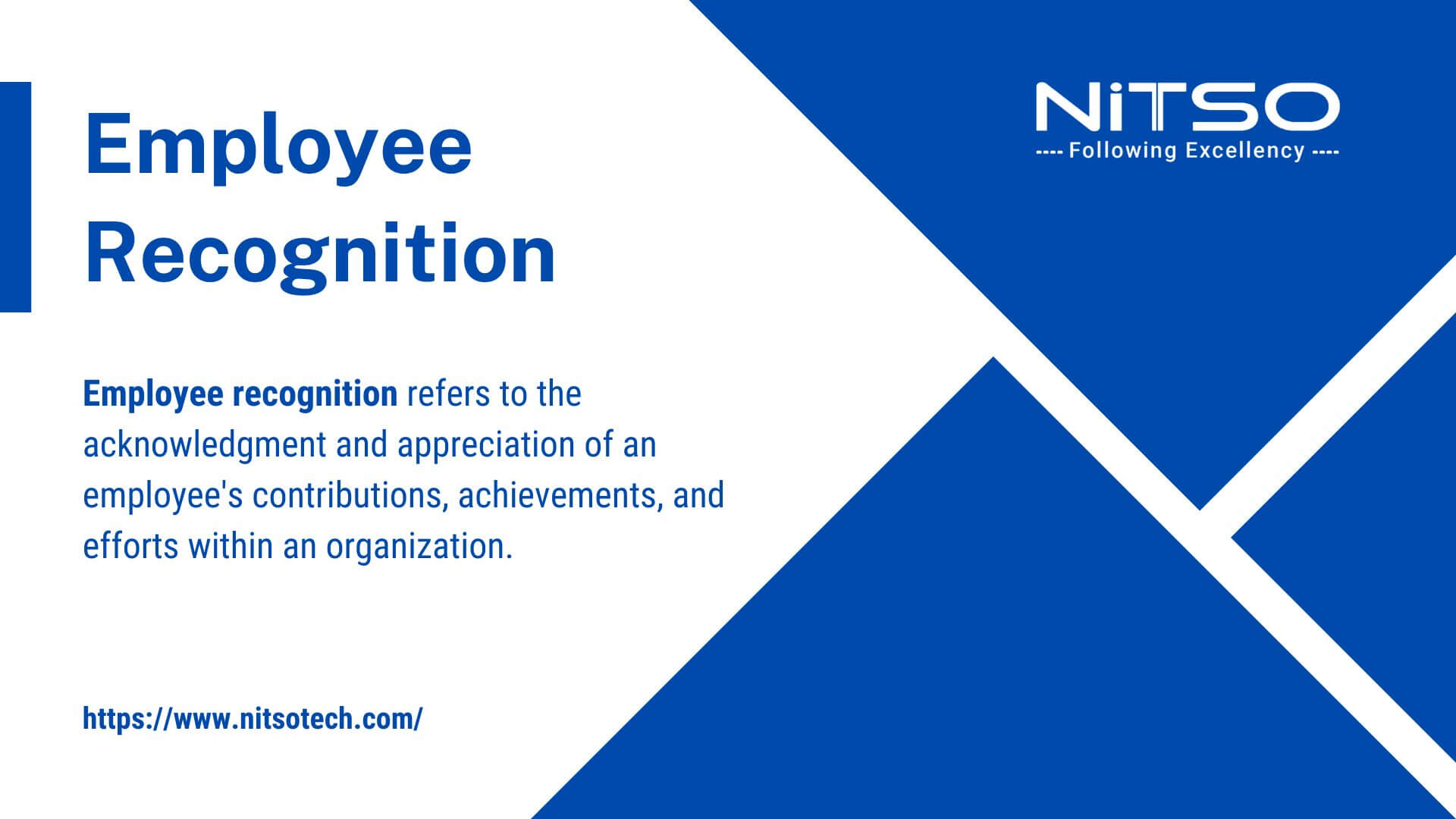In an era where talent retention and employee engagement are paramount, how can Indian organizations effectively acknowledge and celebrate their workforce’s contributions? The answer lies in crafting successful employee recognition programs that resonate with the unique cultural nuances and values of the Indian workforce. According to a study by the Society for Human Resource Management (SHRM), companies with effective recognition practices experience 27% lower employee turnover rates. Recognizing and appreciating employees is no longer just a nice-to-have; it’s a strategic imperative for driving organizational success.
Content On This Page
What is the Importance of Employee Recognition?
In today’s highly competitive business landscape, employee recognition has emerged as a powerful tool for organizations to foster a motivated and engaged workforce. The significance of recognizing and appreciating employee contributions cannot be overstated, as it directly impacts various aspects of organizational success.
At its core, employee recognition acknowledges the efforts, achievements, and dedication of individuals within the company. When employees feel valued and appreciated for their hard work, they experience a heightened sense of job satisfaction and self-worth. This positive reinforcement not only boosts their motivation and productivity but also strengthens their emotional connection with the organization, fostering a sense of loyalty and commitment.
The impact of effective employee recognition programs extends beyond individual employees. By cultivating a culture of appreciation, organizations can create a positive and supportive work environment where employees feel encouraged to collaborate, innovate, and strive for excellence. This collective mindset can contribute to improved team dynamics, enhanced problem-solving capabilities, and a shared sense of purpose, ultimately driving organizational success.
Moreover, employee recognition plays a crucial role in talent retention. In the competitive Indian job market, where top talent is highly sought after, organizations that prioritize recognizing and rewarding their employees are better positioned to attract and retain skilled professionals. By demonstrating their commitment to employee growth and well-being, companies can foster a sense of loyalty and reduce costly turnover rates.
Effective employee recognition programs can also have a ripple effect on customer satisfaction. When employees feel valued and engaged, they are more likely to provide exceptional service and represent the company’s values to clients and customers. This positive attitude and commitment to excellence can contribute to stronger customer relationships and improved brand reputation.
How to Understand the Indian Workforce for Effective Recognition Programs?
Designing successful employee recognition programs in India requires a deep understanding of the unique characteristics and cultural nuances of the Indian workforce. The rich diversity and traditional values ingrained within the Indian society play a pivotal role in shaping employee expectations and perceptions of recognition initiatives.
One of the defining traits of the Indian workforce is its strong emphasis on collectivism and community. In contrast to the more individualistic cultures prevalent in the West, Indian employees often prioritize group harmony, loyalty, and a sense of belonging. As such, recognition programs that foster a collaborative and inclusive environment resonate strongly with the Indian workforce.
Additionally, Indian employees place great value on respect and hierarchical structures. Programs that acknowledge and celebrate contributions at various levels, from entry-level employees to senior management, can effectively align with these cultural norms. Incorporating recognition from supervisors and leaders can carry significant weight and meaning for Indian employees.
Another critical aspect to consider is the diverse cultural and religious backgrounds present within the Indian workforce. Designing recognition initiatives that are inclusive and sensitive to these differences is crucial for ensuring widespread acceptance and participation. Incorporating elements of traditional Indian festivals, customs, and symbols can add a personal touch and enhance the emotional connection with the program.
Furthermore, the Indian workforce is known for its strong work ethic and commitment to professional growth. Recognition programs that offer opportunities for skill development, training, and career advancement can be highly motivating and appealing to Indian employees, aligning with their aspirations for personal and professional growth.
By deeply understanding the unique characteristics and cultural nuances of the Indian workforce, organizations can design successful employee recognition programs that resonate with employees on a personal and emotional level. This cultural sensitivity not only fosters a more engaged and motivated workforce but also contributes to the overall success and competitiveness of the organization within the Indian market.
What are the Essential Elements of Successful Employee Recognition Programs?
Creating an Effective Employee Recognition Plan that resonates with the Indian workforce requires careful consideration of various key elements. By incorporating these critical components, organizations can create a comprehensive and impactful recognition strategy that drives engagement, motivation, and organizational success.
- Timely and Consistent Recognition: The timeliness of recognition plays a crucial role in its effectiveness. Acknowledging achievements promptly, soon after the noteworthy contribution or milestone, reinforces the behaviour and demonstrates the organization’s commitment to recognizing excellence. Consistency is also paramount, ensuring that recognition is provided equitably and regularly, fostering a culture of continuous appreciation.
- Meaningful and Personalized Rewards: While monetary incentives can be valuable, successful recognition programs go beyond financial rewards. Tailoring rewards to individual preferences and achievements can significantly enhance their impact. This could include non-monetary rewards such as personalized gifts, experiences, or opportunities for professional development aligned with the employee’s interests and aspirations.
- Peer Recognition: Encouraging peer-to-peer recognition can be a powerful tool in building a supportive and collaborative work environment. When colleagues acknowledge and appreciate each other’s efforts, it fosters a sense of camaraderie and mutual respect, ultimately contributing to a positive team dynamic and a culture of recognition.
- Transparent and Fair Process: For recognition programs to be truly effective, they must be perceived as transparent and fair by employees. Clearly communicating the criteria, processes, and decision-making involved in the recognition process can help build trust and credibility within the workforce. Ensuring equal opportunities for recognition, regardless of position or tenure, is crucial for fostering a sense of inclusivity and fairness.
- Aligning with Company Values: Linking recognition to the organization’s core values and goals can amplify its impact and reinforce desired behaviours. By recognizing employees who exemplify the company’s values, such as innovation, customer service, or teamwork, organizations can shape and reinforce the desired culture while celebrating those who embody these principles.
- Leadership Involvement: The active involvement and participation of leaders and managers in the recognition process is essential for its success. When leaders take the initiative to acknowledge and celebrate employee achievements, it sends a powerful message about the importance of recognition within the organization and sets an example for others to follow.
What are the Best Practices for Implementing Employee Recognition Programs?
Implementing successful employee recognition programs requires careful planning and execution. By following best practices, organizations can ensure a smooth rollout, widespread adoption, and long-term sustainability of their recognition initiatives. Here are some key best practices to consider:
- Involve Employees in Program Design: Engaging employees throughout the design process is crucial for creating a recognition program that resonates with their preferences and needs. Seek employee input and feedback through surveys, focus groups, or collaborative workshops. This participatory approach not only ensures the program is tailored to the workforce but also fosters a sense of ownership and buy-in from the start.
- Effective Communication: Clearly communicating the program’s objectives, criteria, processes, and rewards is essential for its success. Utilize various communication channels, such as company intranets, email newsletters, town hall meetings, and training sessions, to ensure that all employees understand the recognition program’s purpose and how to participate effectively.
- Leadership Involvement: The active involvement of leaders and managers is paramount for the recognition program’s credibility and sustained success. Encourage leaders to champion the program, participate in recognition activities, and lead by example. Their visible support and commitment can significantly influence employee engagement and participation.
- Continuous Evaluation and Improvement: Regularly assessing and refining the recognition program based on employee feedback and performance data is crucial for its long-term effectiveness. Establish mechanisms for gathering feedback, such as surveys or focus groups, and use the insights to make necessary adjustments or introduce new elements to keep the program fresh and relevant.
- Leverage Technology: In today’s digital age, leveraging technology can greatly enhance the accessibility and efficiency of recognition programs. Consider implementing online platforms, mobile apps, or gamification elements to streamline the recognition process, increase visibility, and foster engagement across the organization.
- Celebrate and Promote Success Stories: Sharing success stories and highlighting exemplary instances of recognition can create a ripple effect of motivation and inspiration throughout the organization. Celebrate these stories through internal communication channels, social media, or company events, reinforcing the program’s impact and encouraging others to participate.
- Allocate Adequate Resources: Successful recognition programs require dedicated resources, including time, budget, and personnel. Ensure sufficient resources are allocated for program administration, rewards, and promotional activities to maintain momentum and demonstrate the organization’s commitment to employee recognition.
What Innovative Recognition Ideas Can Indian Companies Explore?
While traditional recognition methods like bonuses, awards, and promotions remain valuable, organizations in India can stand out by incorporating innovative and culturally relevant recognition ideas into their programs. By thinking outside the box and tapping into the rich tapestry of Indian traditions and values, companies can create recognition experiences that resonate deeply with their employees.
- Cultural and Traditional Rewards: Incorporating elements of Indian culture and traditions into recognition initiatives can foster a stronger emotional connection with employees. This could include offering traditional Indian garments, handcrafted artisanal items, or experiential rewards like cultural tours or culinary experiences. Such rewards not only celebrate employees’ achievements but also honour their heritage and identity.
- Corporate Social Responsibility (CSR) Initiatives: Linking recognition to the company’s corporate social responsibility efforts can be a powerful way to engage employees while making a positive impact on society. Consider offering volunteer opportunities, charitable donations, or the chance to participate in community development projects as recognition rewards, aligning with the Indian ethos of giving back to the community.
- Skill Development and Learning Opportunities: In line with the Indian workforce’s strong emphasis on professional growth, offering skill development and learning opportunities as recognition rewards can be highly motivating. This could include access to online courses, professional certifications, or opportunities to attend conferences and industry events, enabling employees to expand their knowledge and advance their careers.
- Mentorship Programs: Implementing a structured mentorship program can be a valuable recognition tool, particularly for employees seeking guidance and career advancement. Recognizing high-performing employees by offering them the opportunity to mentor others not only acknowledges their achievements but also fosters knowledge-sharing and talent development within the organization.
- Family-Oriented Rewards: In the Indian culture, where family values hold great significance, incorporating family-oriented rewards into recognition programs can be highly appreciated. This could include offering family vacation packages, family-friendly company events, or flexible work arrangements that allow for better work-life balance.
- Gamification and Digital Platforms: To engage the younger and tech-savvy segments of the Indian workforce, consider incorporating gamification elements and digital recognition platforms. These interactive and modern approaches can make the recognition experience more engaging and accessible, fostering a sense of friendly competition and social recognition among employees.
How to Overcome Challenges and Pitfalls in Employee Recognition Programs?
While implementing successful employee recognition programs can yield numerous benefits, organizations in India may encounter various challenges and pitfalls along the way. Addressing these potential obstacles proactively can ensure the program’s effectiveness and long-term sustainability.
- Addressing Cultural Barriers: India’s diverse cultural landscape and traditional values can sometimes present barriers to the acceptance and adoption of recognition initiatives. Overcoming these cultural barriers requires a deep understanding of the workforce’s perspectives and sensitivities. Engaging employees from various backgrounds during the program design phase, incorporating culturally relevant elements, and fostering open communication can help mitigate potential resistance.
- Avoiding Recognition Fatigue: Over time, even the most well-intentioned recognition programs can lose their impact if they become stale or predictable. To prevent recognition fatigue, organizations must continuously evolve and refresh their programs. This can involve introducing new reward options, varying recognition formats, or incorporating feedback from employees to keep the experience engaging and meaningful.
- Ensuring Fairness and Transparency: Perceptions of unfairness or favouritism can quickly undermine the credibility of a recognition program. Establishing clear and transparent criteria, maintaining open communication about the decision-making process, and providing equal opportunities for recognition across all levels and departments is crucial for fostering a sense of fairness and trust among employees.
- Balancing Intrinsic and Extrinsic Motivation: While recognition programs often incorporate extrinsic rewards, it is important to strike a balance with intrinsic motivation. Overemphasizing external rewards can potentially diminish the inherent satisfaction and pride employees derive from their work. Organizations should aim to cultivate a culture where recognition reinforces intrinsic motivation, fostering a genuine sense of accomplishment and purpose.
- Budgeting and Resource Allocation: Implementing and sustaining an effective recognition program requires dedicated resources, including time, budget, and personnel. Carefully allocating resources and ensuring ongoing support from leadership is essential to avoid program stagnation or inconsistencies in recognition efforts.
- Aligning with Organizational Strategy: Recognition programs should be closely aligned with the organization’s overall strategy, goals, and values. Failure to do so can lead to misaligned incentives and recognition criteria, potentially undermining the program’s effectiveness and credibility.
Conclusion
Building successful employee recognition programs in the Indian workplace requires a holistic approach that combines best practices, cultural sensitivity, and innovative ideas. By understanding the unique characteristics of the Indian workforce, organizations can design recognition initiatives that foster a sense of pride, motivation, and loyalty among employees.
Embracing elements of Indian culture, traditions, and values can create a deeper emotional connection, making recognition experiences more meaningful and impactful. Additionally, leveraging technology, encouraging peer recognition, and aligning with organizational goals can further enhance the effectiveness of these programs.
Ultimately, investing in successful employee recognition programs is an investment in the organization’s most valuable asset – its people. By celebrating achievements, fostering a culture of appreciation, and empowering employees to reach their full potential, companies in India can unlock a competitive advantage and drive sustained growth in an increasingly dynamic and competitive business landscape.
Article you might be interested in Successful Restructuring of Company: Strategies and Best Practices








0 Comments